Filter by

Epilepsy Towards the Next Decade New Trends and Hopes in Epileptology
A comprehensive collection of the most recent knowledge on the biological bases of various kinds of epilepsies and modern clinical approaches to their treatment. Epilepsy affects about 0.5-1% of the world's population (about 50,000,000 individuals) and the main goal of its treatment is to eliminate seizures without creating side effects. Despite numerous advances in the treatment of epilepsy an…
- Edition
- -
- ISBN/ISSN
- 978-3-319-12283-0
- Collation
- 19 b/w illustrations, 21 illustrations in colour
- Series Title
- -
- Call Number
- -
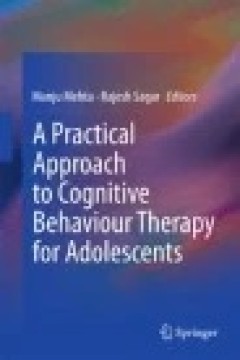
A Practical Approach to Cognitive Behaviour Therapy for Adolescents
This volume discusses adolescent mental health concerns in non-Western contexts and situations, ranging from common mental disorders to building life skills. It combines previous literature and empirical work on various disorders to provide a comprehensive account of cognitive behaviour therapy (CBT) for adolescents. The volume covers a wide spectrum of conditions, ranging from anxiety to affec…
- Edition
- Ed. 1
- ISBN/ISSN
- 978-81-322-2241-5
- Collation
- -
- Series Title
- -
- Call Number
- 616.8914 PRA p

Medicinal Plants of Northern Thailand for the Treatment of Cognitive Impairme…
This book provides a description of cognitive impairment in the elderly population through the lens of Thai Traditional Medicine as it is practiced in northern Thailand. It provides an overview of Thai Traditional Medicine and the memory loss presented in elderly dementia. Some medicinal plants used by traditional Thai healers to treat cognitive decline and memory issues in the elderly are revi…
- Edition
- 1
- ISBN/ISSN
- 978-3-319-10240-5
- Collation
- XI, 84
- Series Title
- Series Title SpringerBriefs in Plant Science
- Call Number
- -
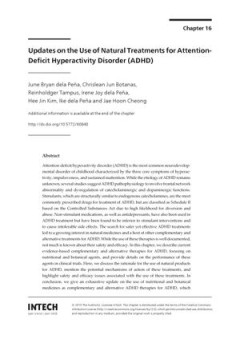
Updates on the Use of Natural Treatments for Attention-Deficit Hyperactivity …
Attention-deficit/hyperactivity disorder (ADHD) is the most common neurodevelopmental disorder of childhood characterized by the three core symptoms of hyperactivity, impulsiveness, and sustained inattention. While the etiology of ADHD remains unknown, several studies suggest ADHD pathophysiology to involve frontal network abnormality and dysregulation of catecholaminergic and dopaminergic func…
- Edition
- -
- ISBN/ISSN
- 9789535121664
- Collation
- -
- Series Title
- -
- Call Number
- -
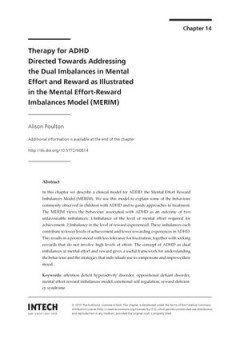
Therapy for ADHD Directed Towards Addressing the Dual Imbalances in Mental Ef…
In this chapter we describe a clinical model for ADHD: the Mental Effort Reward Imbalances Model (MERIM). We use this model to explain some of the behaviour commonly observed in children with ADHD and to guide approaches to treatment. The MERIM views the behaviour associated with ADHD as an outcome of two unfavourable imbalances: 1.Imbalance of the level of mental effort required for achievemen…
- Edition
- -
- ISBN/ISSN
- 9789535121664
- Collation
- -
- Series Title
- -
- Call Number
- -
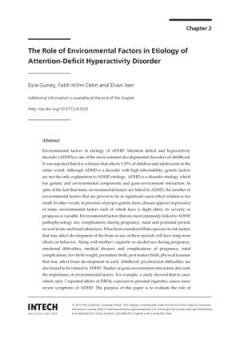
The Role of Environmental Factors in Etiology of Attention- Deficit Hyperacti…
Environmental factors in etiology of ADHD Attention deficit and hyperactivity disorder (ADHD) is one of the most common developmental disorders of childhood. It was reported that it is a disease that affects 5.29% of children and adolescents in the entire world. Although ADHD is a disorder with high inheritability, genetic factors are not the only explanation to ADHD etiology. ADHD is a disorde…
- Edition
- -
- ISBN/ISSN
- 9789535121664
- Collation
- -
- Series Title
- -
- Call Number
- -
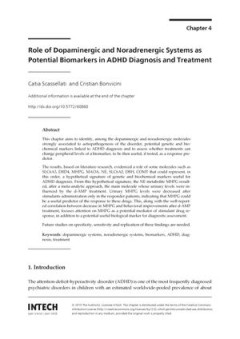
Role of Dopaminergic and Noradrenergic Systems as Potential Biomarkers in ADH…
This chapter aims to identify, among the dopaminergic and noradrenergic molecules strongly associated to aetiopathogenesis of the disorder, potential genetic and biochemical markers linked to ADHD diagnosis and to assess whether treatments can change peripheral levels of a biomarker, to be then useful, if tested, as a response predictor.
- Edition
- -
- ISBN/ISSN
- 9789535121664
- Collation
- -
- Series Title
- -
- Call Number
- -
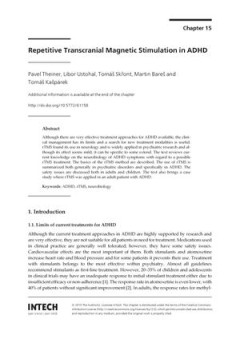
Repetitive Transcranial Magnetic Stimulation in ADHD
Although there are very effective treatment approaches for ADHD available, the clinical management has its limits and a search for new treatment modalities is useful. rTMS found its use in neurology and is widely applied in psychiatric research and although its effect seems mild, it can be specific to some extend. The text reviews current knowledge on the neurobiology of ADHD symptoms with rega…
- Edition
- -
- ISBN/ISSN
- 9789535121664
- Collation
- -
- Series Title
- -
- Call Number
- -
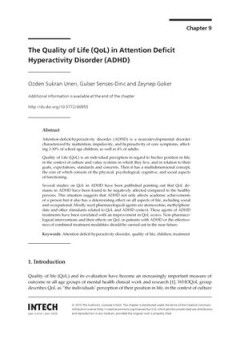
The Quality of Life (QoL) in Attention Deficit Hyperactivity Disorder (ADHD)
Attention-deficit/hyperactivity disorder (ADHD) is a neurodevelopmental disorder characterized by inattention, impulsivity, and hyperactivity of core symptoms, affecting 3-10% of school age children, as well as 4% of adults.
- Edition
- -
- ISBN/ISSN
- 9789535121664
- Collation
- -
- Series Title
- -
- Call Number
- -
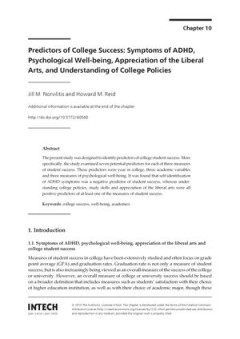
Predictors of College Success Symptoms of Adhd, Psychological Well-Being, Ap…
The present study was designed to identify predictors of college student success. More specifically, the study examined seven potential predictors for each of three measures of student success. These predictors were year in college, three academic variables and three measures of psychological well-being. It was found that self-identification of ADHD symptoms was a negative predictor of student …
- Edition
- -
- ISBN/ISSN
- 9789535121664
- Collation
- -
- Series Title
- -
- Call Number
- -
 Computer Science, Information & General Works
Computer Science, Information & General Works  Philosophy & Psychology
Philosophy & Psychology  Religion
Religion  Social Sciences
Social Sciences  Language
Language  Pure Science
Pure Science  Applied Sciences
Applied Sciences  Art & Recreation
Art & Recreation  Literature
Literature  History & Geography
History & Geography